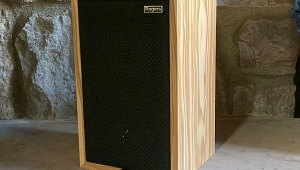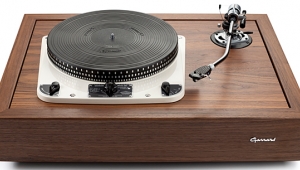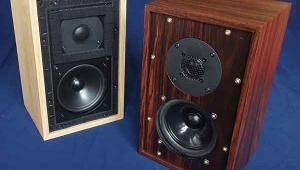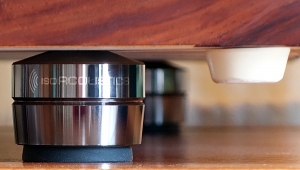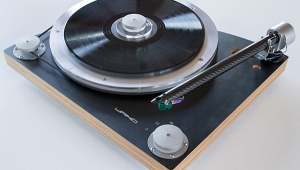| Columns Retired Columns & Blogs |
Listening #74
The 78rpm train has been derailed for the time being. The KAB Souvenir VSP Mk.II phono preamplifier, which I intended to review in this space, has yet to arrive from its manufacturer, owing to a delay in the availability of certain parts. The Elberg MD12 Mk.III preamp has yet to arrive from its manufacturer, owing to a recent redesign. The Sentec EQ-10 preamp is here but has a broken switch I haven't got around to fixing. The McIntosh C-8 preamp, a lovely vintage piece that's available for peanuts on the used market, is still undergoing renovation by someone who isn't me.
So I'm taking this opportunity to catch up on some of the smaller matters that have piled up in the last six years, none of which quite warrants a column of its own.
It tracks well at 31 cents
Ortofon, EMT, Denon, and Miyajima Labs all produce phono cartridges designed to play at downforces of 3.5 or more grams. Yet most tonearms aren't calibrated for stylus forces greater than 3gm, if they're calibrated at all. Similarly, most stylus-force gauges on the market peak out at 3gm—including my beloved Technics SH-50P1, which I've used for over 20 years. (The Technics adds insult to injury by altogether eliminating the 0.1gm calibration lines from their scale between 2.0 and 3.0gm; it's like going to Macy's for an expensive muumuu and being told that they don't do alterations!)
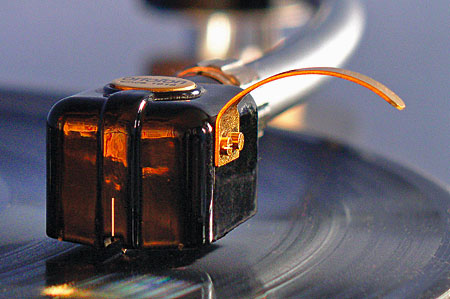
Esoteric Sound, the phono specialists who've inherited the Rek-O-Kut mantle (I wrote about their Re-Equalizer II in last month's column), have a good, cheap solution: the Rek-O-Kut Stylus Force Gauge ($24). It's a simple balance beam, such as the one that comes free with most Ortofon cartridges. But whereas the Ortofon scale is too tiny and ambiguous to be consistently useful—and it, too, tops out at 3gm—the Rek-O-Kut is big and easy, and it comes with a total of 5.75gm in plastic weights, for use in various combinations. Where that isn't enough, the manufacturer recommends using various coins, the weights of which are listed on their website. I've found that three dimes and one penny come out to 9.25gm—perfect for EMT's 78-specific OFD 65i pickup head.

Serious Wood
A couple of manufacturers responded to my column of June 2008, in which I railed against the majority of audio-specific furniture as being ugly, stupid, or both. My opinion remains rooted to the spot, but today that majority seems somewhat less vast.
First came news of a furniture line by Anthony Abbate, who makes loudspeaker cabinets for DeVore Fidelity (whose excellent Gibbon 9 speaker I wrote about in my December 2007 column). Abbate's audio-furniture business, Box Furniture Co., specializes in multitiered wood racks that are stable and substantial without being unduly massive. Only premium hardwoods—maple, anigre, and sapele are the main choices—are used for the frames, and the shelves are plywood with similarly nice veneers. All joints are mortise-and-tenon, and Abbate is working on a way to flat-pack the finished product for home assembly to keep shipping costs down. Catalyzed finishes are applied to all surfaces, although Abbate is researching the use of environmentally friendly water-based lacquers for future production.

I have an early Box Furniture creation here at home: a portion of a much larger modular rack that was made for a Consumer Electronics Show display. I think it's a beautiful thing—very Harvey Ellis in a 21st-century way (sans découpage)—and it's quite sturdy. More to the point, the Box Furniture table sounds good—or, rather, equipment placed atop it sounds good. Even my Linn LP12 turntable.
I also received a note from the unfailingly nice Jim Pendleton, whose Osage Audio, based in Missouri, offers a variety of accessories. Pendleton represents a cabinetmaker named Jeff Dicks, whose Audio Elegance furniture also places an emphasis on aesthetically simple, sturdy designs. Dicks' racks and tables are also modular without appearing clumsily so, and, in an especially nice touch, many of the Audio Elegance equipment stands incorporate a nicely concealed chamber for mass loading, should the user so desire. Audio Elegance also makes good-looking hardwood LP racks—also modular—to complement their equipment shelves. I can't imagine a better approach, especially for a freestanding record rack, whose every surface should be well finished. (Steel shelves are ugly, and probably mess with the sound, too.)
Audio Elegance offers three lines; in the upper two, Dakota and James River, only select hardwoods, softwoods, and multidirectional plywoods are used. Biscuit joinery is featured throughout, and finishes include catalyzed lacquers and hand-rubbed oils.
Whine-of-the-Month Club
As someone with an actual, honest-to-God point of view, I expect and welcome e-mails and Internet postings from people whose opinions differ from mine. And while the notion that my column is somehow calculated to provoke controversy is true only in the minds of the fevered and the dim—in my six years as custodian of this space, neither John Atkinson nor anyone else on staff has ever approached me with the faintest suggestion of how to fill it, or altered my writing in any way but in fine details of grammar and usage—I admit to being disappointed when I don't hear back.
Still, an Audio Asylum thread that was brought to my attention a few weeks ago has shocked and amused even me. In it, three or four audiophiles attempted a pile-on—always a creepy thing when middle-aged men with no apparent social skills are involved—in which I was taken to task for moving my audio system in a different direction by trading in Product A for Product B. Product A, of course, is something that they themselves own, love, and feel obliged to defend.
But when one guy in particular belly-flopped onto the heap, criticizing my more recent recommendations and averring that he has "lost faith" in my abilities, something about his screen name rang a bell. I looked through my e-mails and, sure enough, there he was: As a Stereophile reader, he had begged for my private e-mail address some time ago, so he could glom on to me for free advice—which, witless and trusting dope that I am, I provided without question over the course of several months. Then, when the free advice dried up, and when I acted like a big meanie and sold my (SET, Linn, Lowthers, whatever), it all came down to one thing, and one thing only: Waaaahhhhhhhh!
Hey, fellas—it's just record players and speakers and stuff, okay? It's not a love tryst or a suicide pact or a tree house with passwords and secret handshake. Yes, I parted with an audio component that you're besotted with, and I moved on to something else: Get over it. Stop taking your amps and your speakers and your fat selves so damn seriously and lighten up a little, for God's sake.
Good Synergy
Ortofon and EMT, the two companies that still make integrated phono cartridge/headshell units—or pickup heads, as I've come to call them—have, through the years, offered them in different sizes, for use with different tonearms: If the distance between its stylus tip and its mounting collet is 50mm, the thing is called a G-style pickup head; if that dimension is 32mm, it's an A-style pickup head.
- Log in or register to post comments


